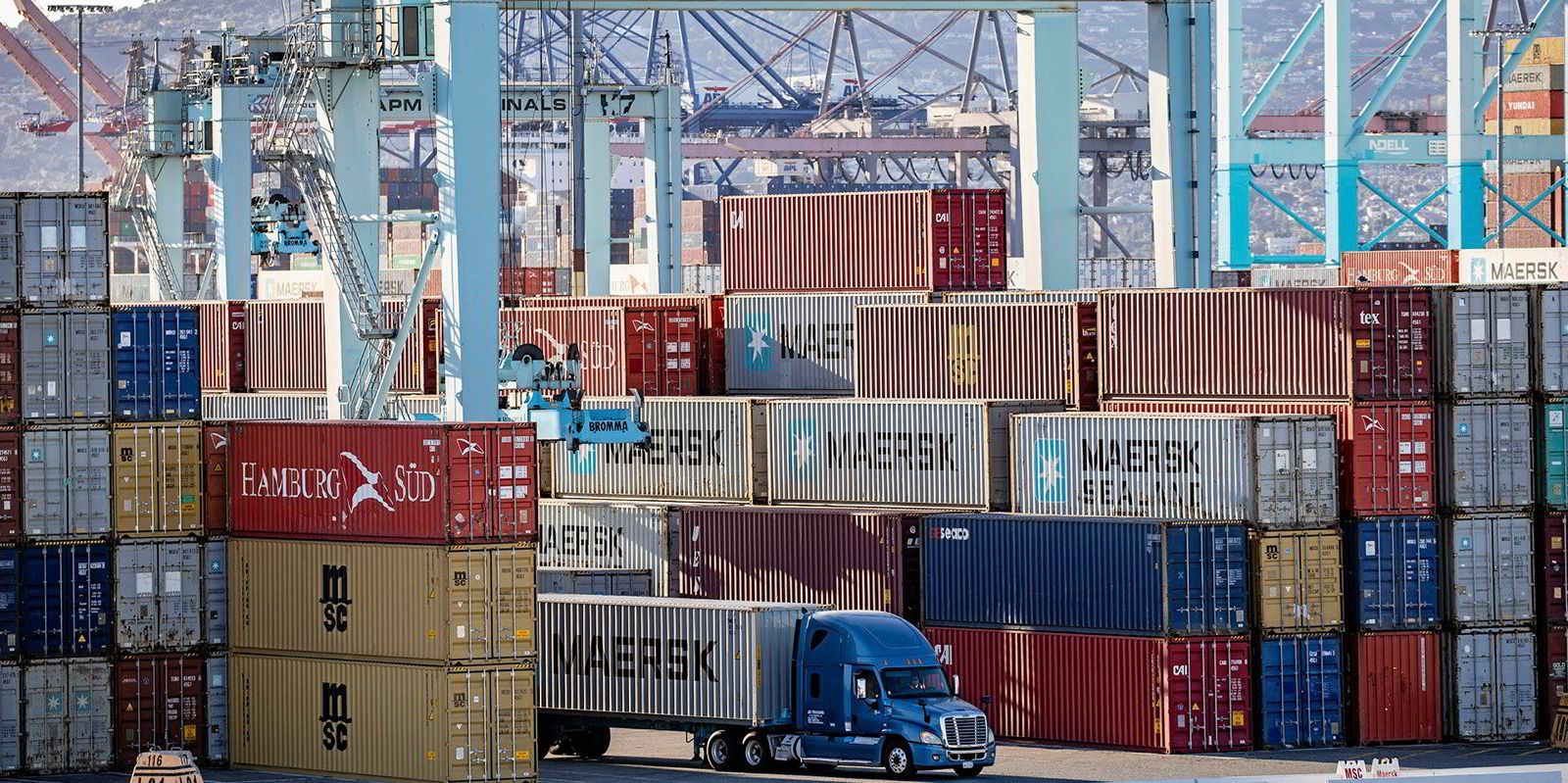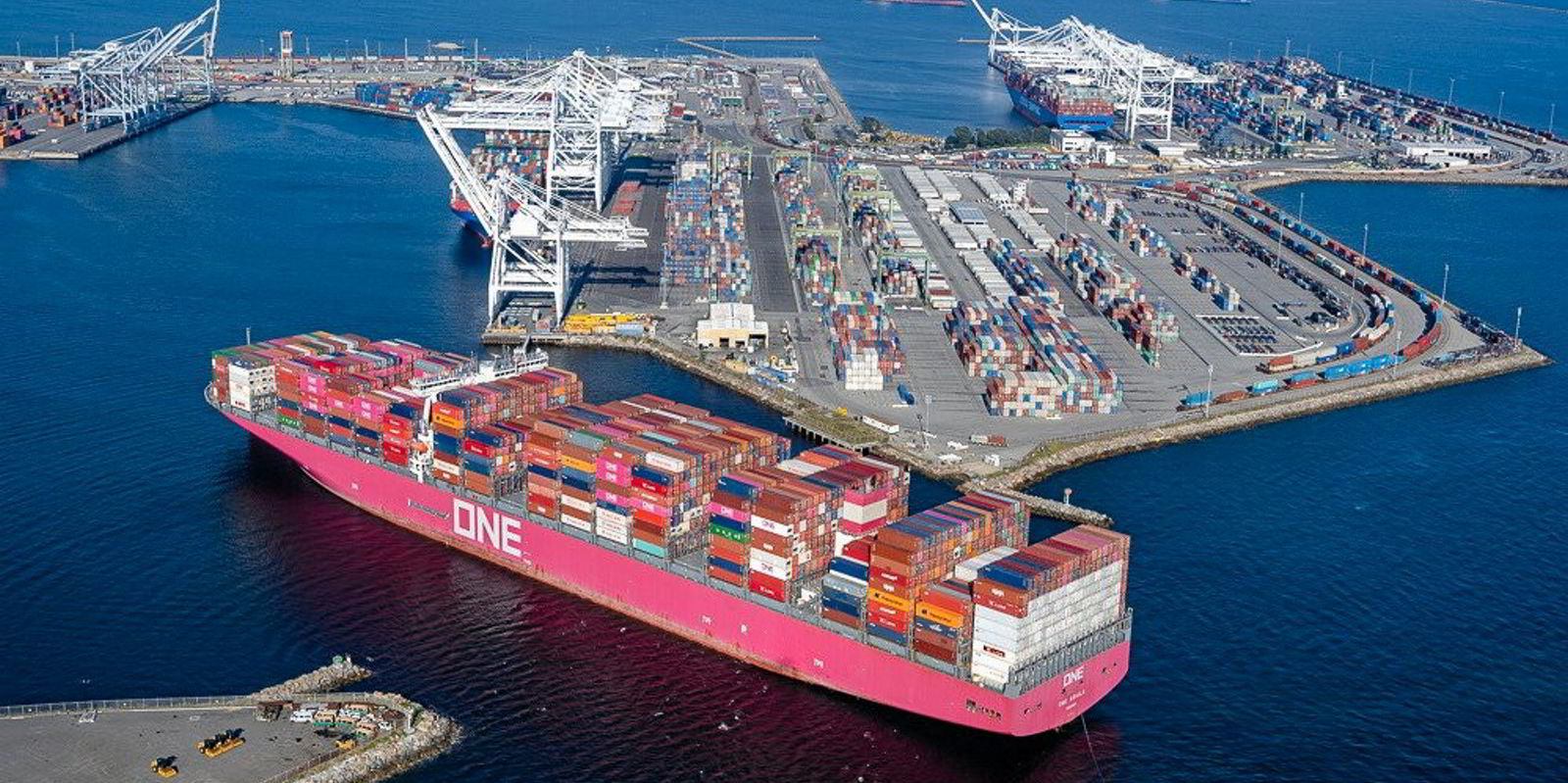The Port of Los Angeles is asking the government to help get containers picked up faster to ease vessel congestion.
But the World Shipping Council liner industry trade group said the logjam will not go away until import volumes get back to normal.
"Returning our overloaded system to a normal, fluid condition will require import volumes to normalise somewhat, which they will, but it will take time," chief executive John Butler told TradeWinds.
"Anyone who pretends otherwise — whether that’s a private party or a government regulator — is setting themselves up for a disappointment at the hands of reality."
The pile-up of boxes at the port adds to the congestion, Butler said, but factors such as insufficient storage space at retailers also play a part.
"Because every link in the chain is overwhelmed, the system does not come back into balance until that import demand pressure goes down across the board," he said.
"So, sure, failure to retrieve cargo is a problem, but you can’t isolate delays at one point in the supply chain and say, 'If we fix this, we fix the whole thing'. It doesn’t work that way."
Not a storage facility
Still, Port of Los Angeles executive director Gene Seroka said the port is not designed to store containers that importers are not picking up fast enough, thus causing supply-chain disruption all the way back to Asia.
"Really what it comes down to is the importers have to pick up their cargo faster," he told TradeWinds.
"It has to be a transit facility. We cannot be a storage location here at the port because you've only got so much land space."
Seroka sent recommendations to the US Department of Transportation in July on better use of container space, information sharing and workforce training.
He also contacted the Department of Commerce & Labor, the Federal Maritime Commission (FMC) and National Economic Council for help with the back-up, mostly caused by consumer demand and Covid-19 disruption.

"We're convening meetings of all stakeholders this week and into the next few weeks to get this going on the ground here and report directly back to the White House," he said.
The FMC told TradeWinds that commissioner Rebecca Dye and Seroka have discussed using port data to enforce the commission’s rule on detention and demurrage and address other supply chain issues.
"The commissioner has been leading Fact-Finding 29, which was established to address operational impacts of Covid-19 on the supply chain," spokesman John DeCrosta said.
"I would expect further information about this effort will be publicly released as developments and events warrant."
As of Tuesday, 24 boxships were at anchorage in the port waiting for a berth, while offloading vessels occupied 18 of its 20 containership berths.
Boxships wait an average of three days at anchorage and then a further nine days for cargo to be unloaded, according to port data.
Seroka said part of the congestion problem is that 30% of truck gate reservations go unused at night because federal law limits truckers to an 11-hour workday, and most of them do not want to pick up boxes late at night.
"Some truckers want to be home for dinner at night," he said.
"The boxships try to keep going, but the amount of containers that are discharged [is] much less because you don't have any room left at the marine container terminal."

As a result, the next ship coming in has to wait at anchorage for a berth before other vessels fully offload and head back to Asia, he said.
"It backs things all the way up to the Asia origin."
Seroka said the trains face a similar problem because their employees also have limited work hours.
"If the cargo sits and is not being picked up, the next train can't get in to work, so it just continues to back up the supply chain domestically on the water and all the way back to Asia," he said.
The solution is to spread out the pick-up times so that they can happen 24 hours a day, but that idea gets pushback from the trucking industry, Seroka said.
"Unfortunately, you've got folks with individual interests that are not playing ball with us yet."





